Nicknamed the “gay capital of the world” by locals, techie transplants and visitors alike, San Francisco is known worldwide for being an anchor for the LGBTQ and historically marginalized communities.
Today, the Castro District is widely known as the city’s “gayborhood,” but before it was the Castro, it was North Beach. Dating back to World War I, in attempts to expunge homosexuality from the armed forces, the US Navy systematically discriminated against gay service members. And rather than abolish the association between the LGBTQ community and the military though the discriminatory “blue discharge” practice – which removed gay members from the ranks – in port cities, the systematic exclusion inadvertently fostered San Francisco’s gay community.
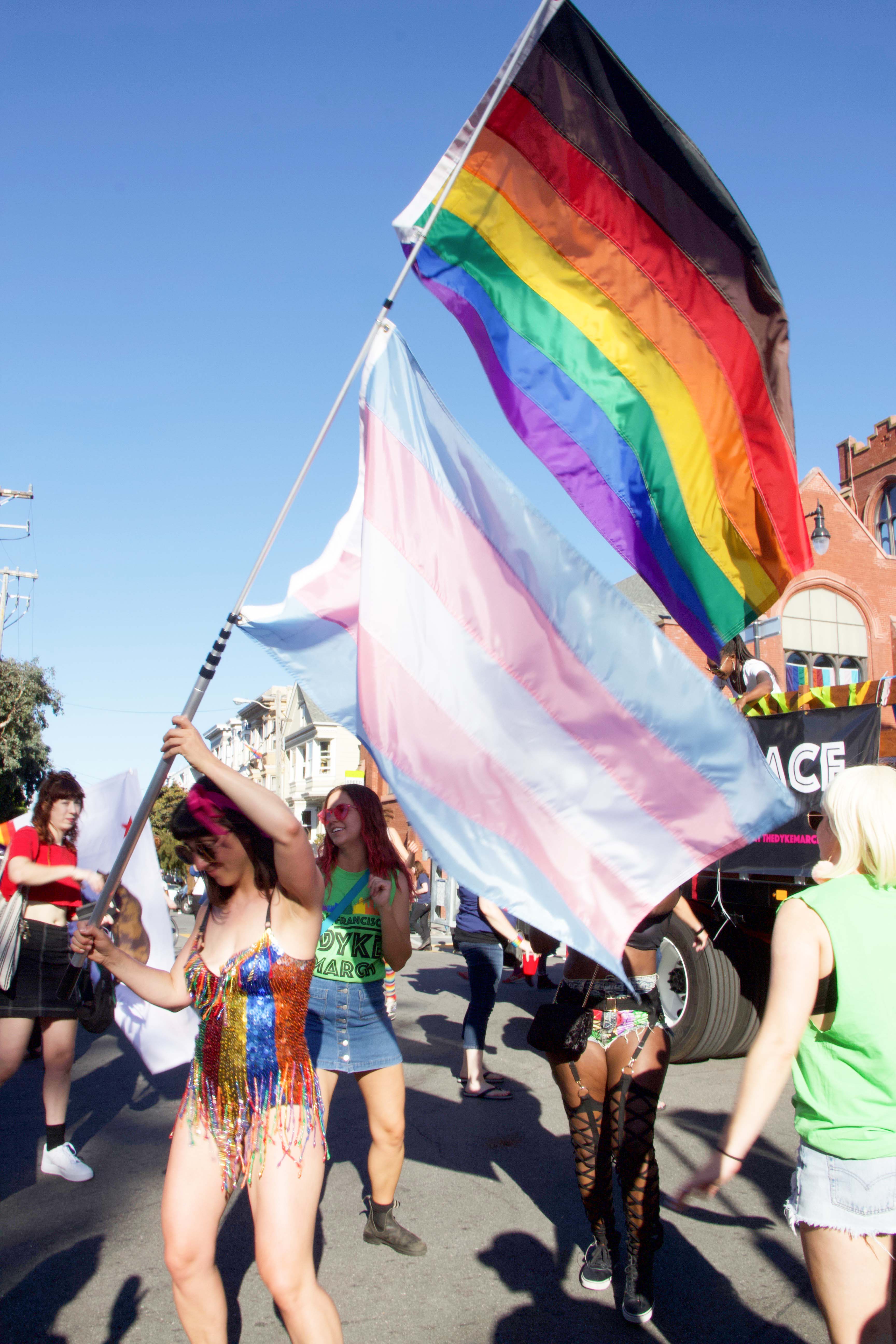
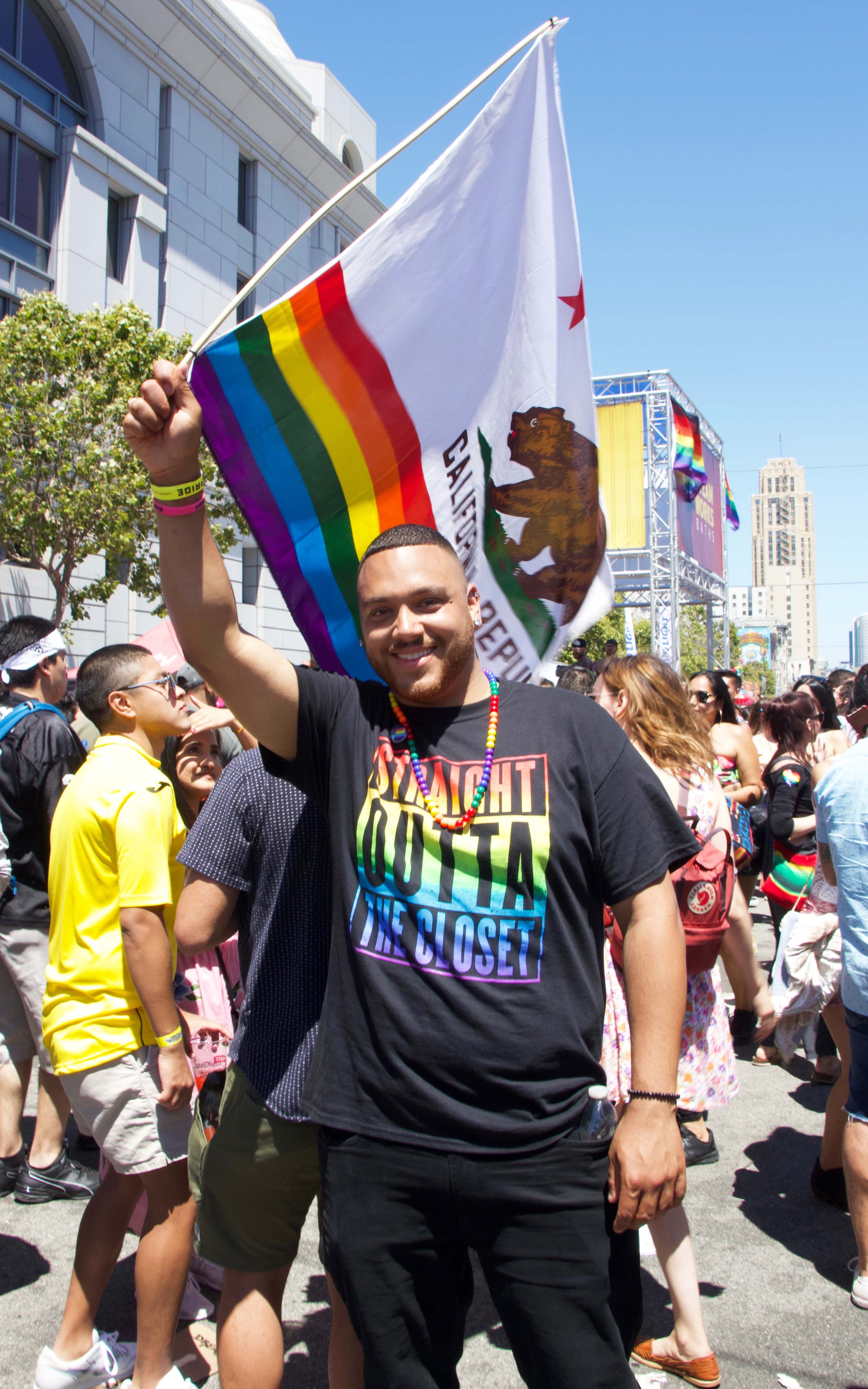
It wasn’t until the 1960s that San Francisco really solidified its reputation for being a liberal, gay city. With the rise of the Beat Generation and Beat culture, heteronormativity was disregarded and queer identities began to take center stage culturally, socially, and politically. Following the 1966 Compton’s Cafeteria Riot in San Francisco’s Tenderloin district and the 1969 Stonewall riots in Manhattan, queer political and community organizing continued to surge. Ranging from the creation of Tavern Guild – the first gay business association – to the election of Harvey Milk, the first openly gay elected official, to the opening of gay bars like El Rio and the no-longer-operating-but-iconic Esta Noche, the cities first Latinx Gay Bar, San Francisco has served as the birthplace for many firsts and a beacon of what cities can be like. Cities where communities don’t take no for an answer and rather than build walls, they build bridges.
With such a globally, recognized, progressive rapport, San Francisco Pride weekend is one the few annual events that serves as an avenue where people can migrate to the city for the first time to start and/or continue unfolding the layers behind its notoriously queer reputation. With the very real unaffordable housing market and the expensive cost of living the city is facing, which has disproportionately pushed out queer people of color, Pride weekend in the city is also an unofficial holiday that for many is worth migrating back to – even for just a weekend.
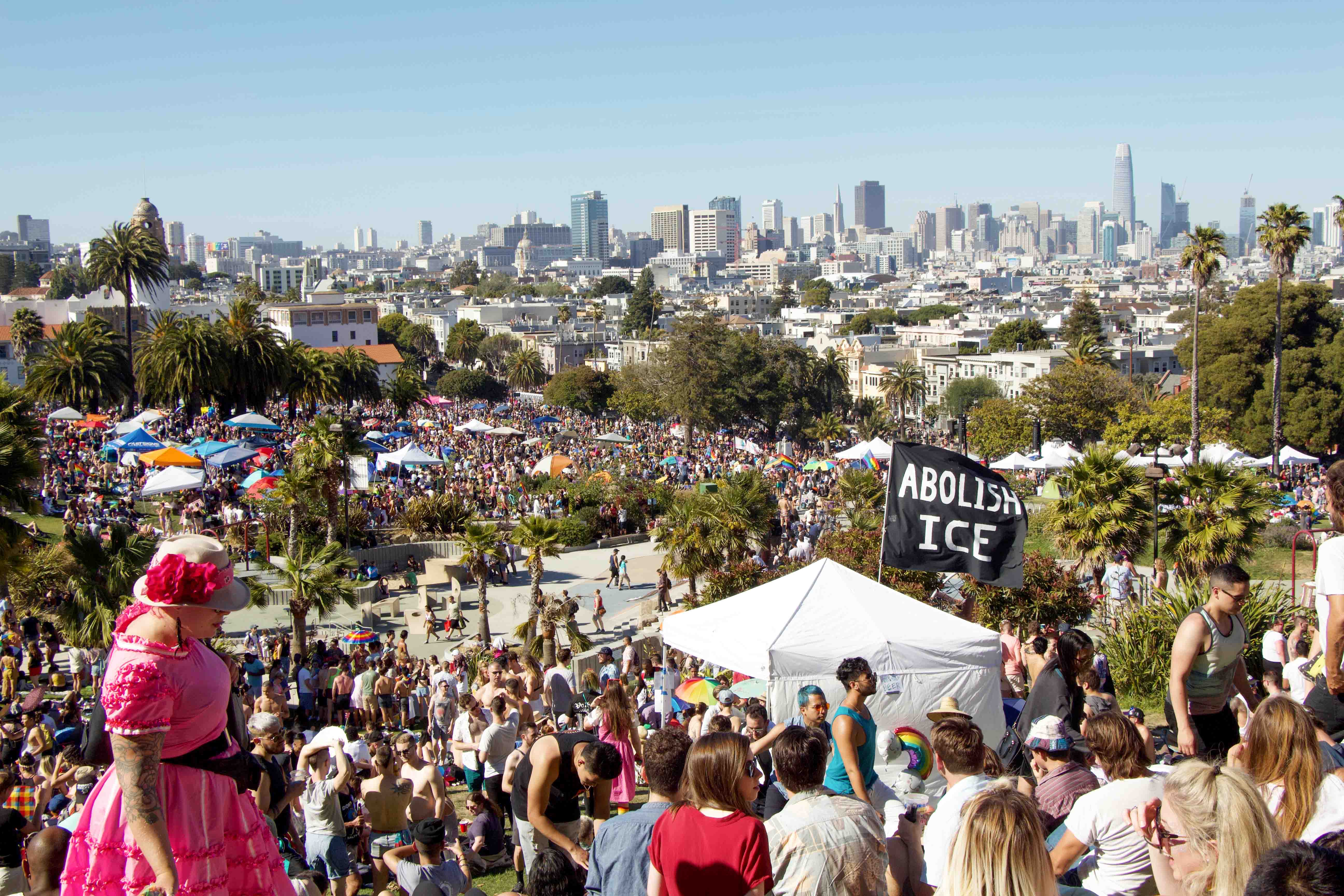
At the 26th annual San Francisco Dyke March at Dolores Park and at the 48th annual San Francisco Lesbian, Gay, Bisexual, Transgender Pride Parade, Remezcla spoke to several Latinx attendees to learn about their experiences and where they fit within the Bay Area’s LGBTQ community.
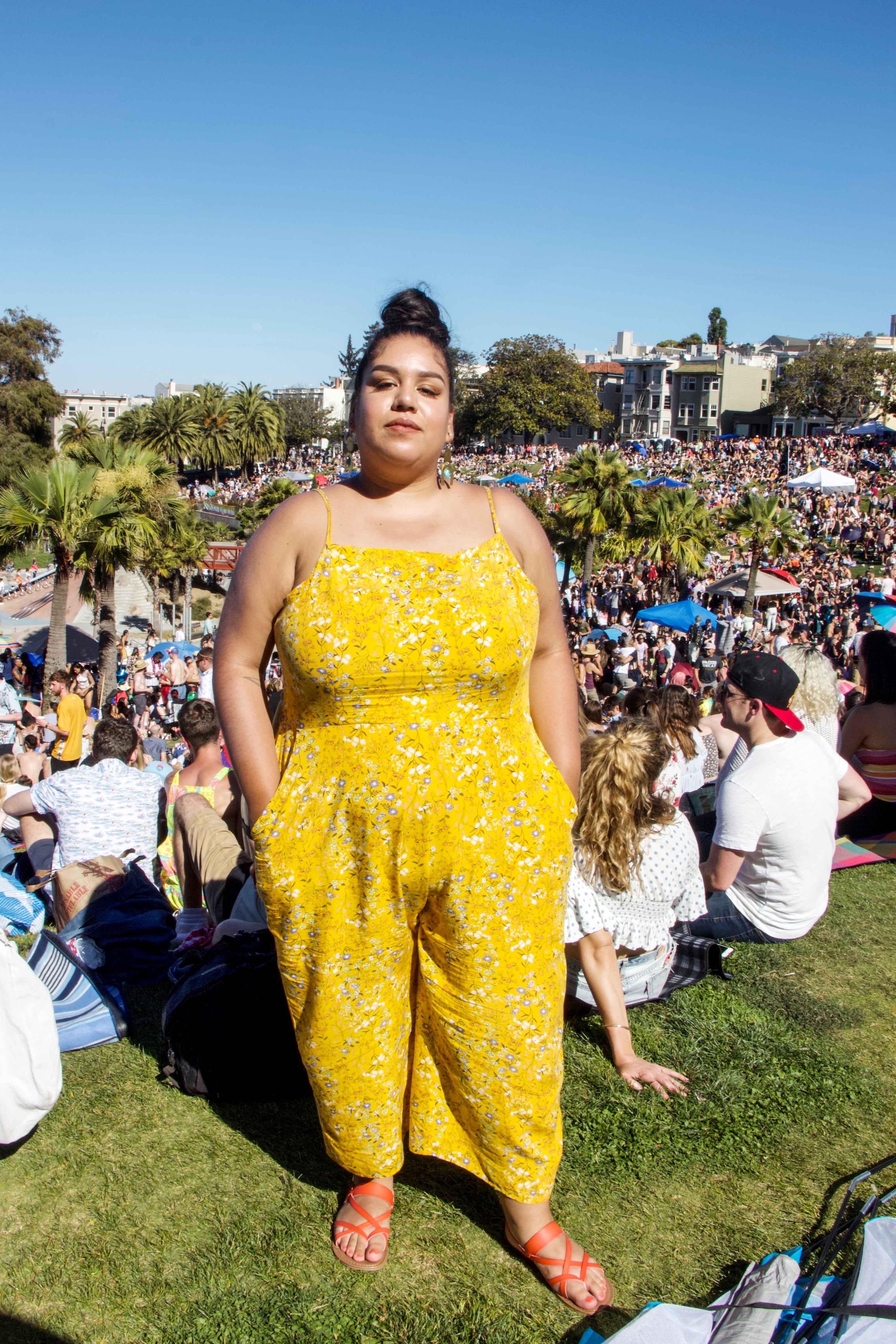
Elizabeth Blancas | She/Her/Hers | 22
“I came out two years ago to my sister, and right after I had to go to work at Galería de la Raza, so I group texted my boss and coworkers that I just told my sister and everyone took me in. And almost a year ago, I came out to my parents and my friends, who are with me here today, Jessica and Ani, as well as everyone else here, helped me come out, took me in, and helped me through it.
“I started getting involved at Galería de la Raza four years ago when I wasn’t out, even to myself and when I first inhabited the space, I was like, ‘Wow, there’s a powerful Chicana lesbian that is running this historical institution,’ and I haven’t left since. I also feel like everyone I feel safe with is QPOC, so wherever the brown and Black people are, which often times is in the Mission with my chosen family. San Francisco has definitely been a super safe space for me, and I’ve felt more comfortable here than where I live in the East Bay, but for sure [the SF queer community] is still hella white and with that comes racism within queer communities and it’s also become really gentrified over the years. I feel like sometimes white people feel that queerness absolves them of everything else, and they’re just not aware of how much they take up space or unaware of how other people are living.”
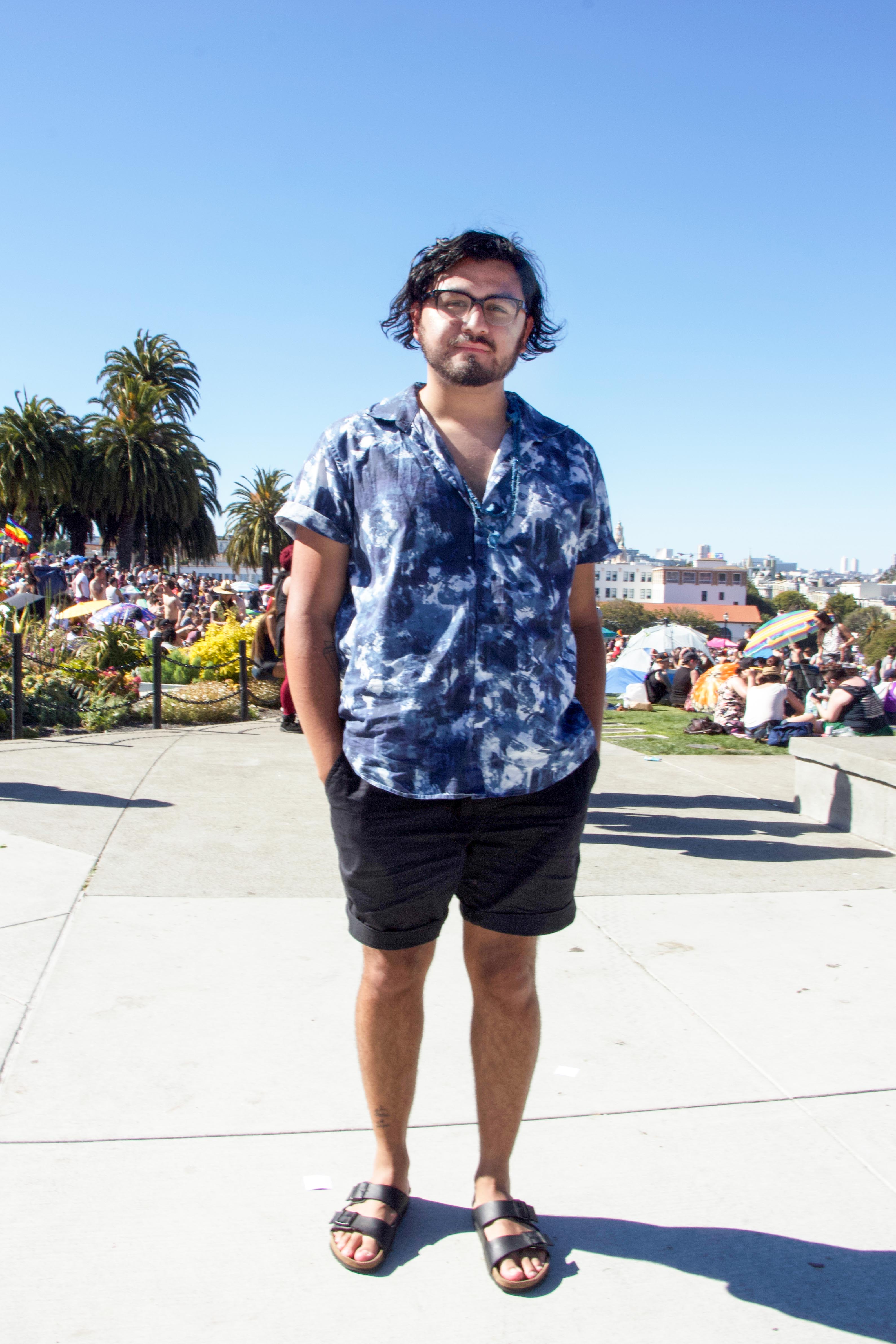
Santi Ramirez-Manzo | He/Him | 27
“When I came out I didn’t have much support. I later found friends in college that helped me through it and to navigate that experience with my parents, but in the beginning there wasn’t really anybody, just me. When I first moved here, San Francisco totally felt like the progressive space I always imagined it to be. What I came here to seek I found, but almost within the year after I moved here, things quickly changed. Condos starting going up, the people started looking different, and I feel the most recent mayoral race has served as a huge marker of that. The political landscape is changing and has served as a huge sign that people are becoming more and more moderate.
“That said, there are those super progressive, liberal people here, too, but even in those spaces there’s not much of a brown presence.The city is changing and it’s hard to keep fighting and keeping up with all these battles. There just needs to be more brown representation at City Hall, and there are already amazing allies and queer folks on the board doing amazing things, but there needs to be more. Political involvement and awareness can’t be an aftermath for our community! Outside of local politics, I love the party Swagger Like Us, it’s such a brown and beautiful party that happens year round at El Rio Bar. Other than that, I can’t say I feel comfortable at most parties but any events at Galería de la Raza, like their recent event, Cumbiatón, I feel at home.”
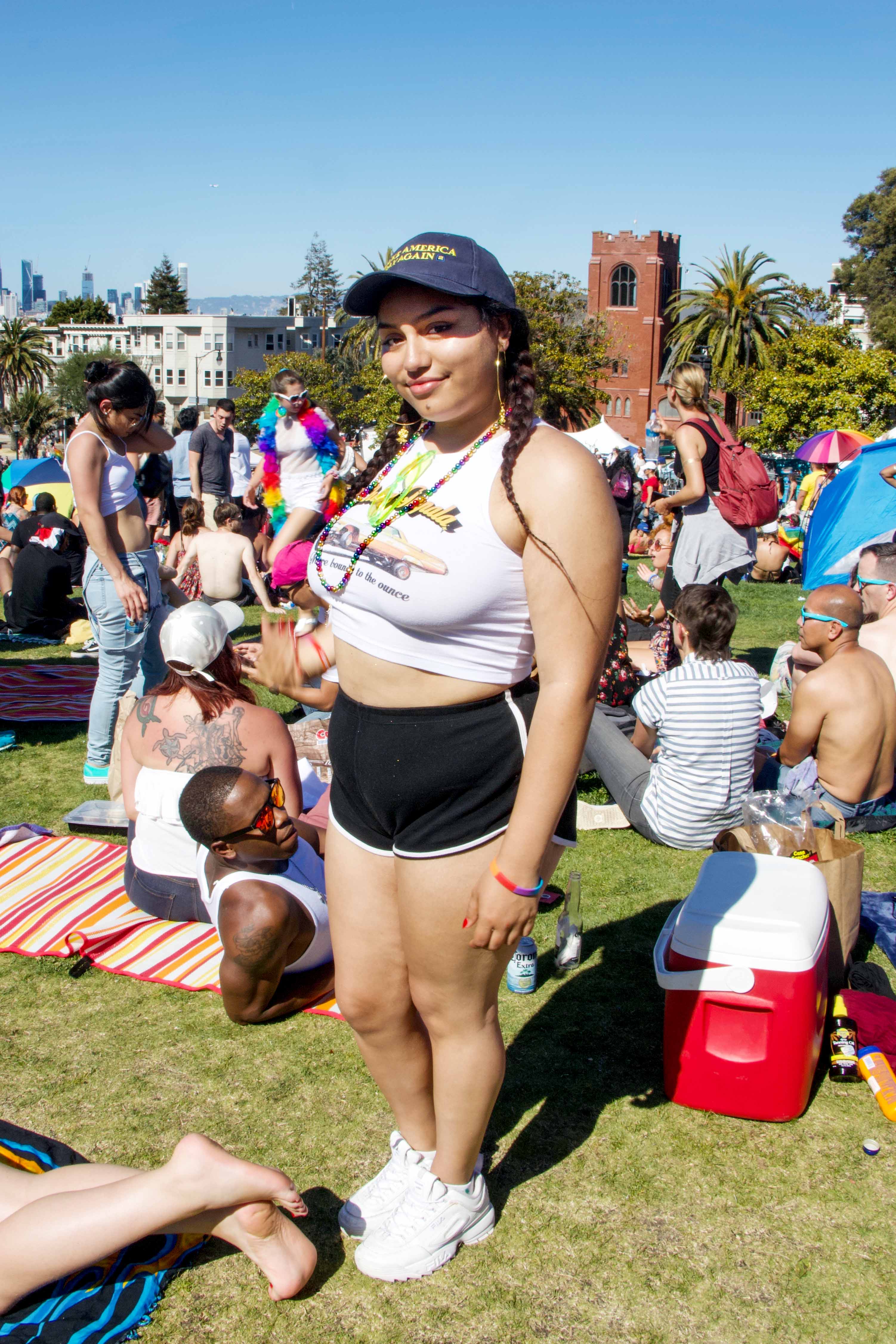
Maya Paredes-Hernández | She/Her | 18
“I grew up gay. I have two moms, so coming out wasn’t that hard but the nerves to come out came from a place of ‘Are they going to believe me because they’re gay?’ But it was a weird made-up fear I had, so it was an easy and supportive process for me and I’m lucky I also have great chosen tías here. I’ve always had a bunch of lesbians around me. I like to think I was raised the opposite sort of way kids my age were. Gay is my normal and that taught me it doesn’t matter what type of parents you have. I’m not the most social queer teen. I haven’t gotten to explore the queer spaces in San Francisco yet, but Galería de la Raza is an amazing place that hosts events for all ages, and it’s a place that makes me feel safe.
“We forget how lucky we have it in comparison to other places. For the most part, San Francisco is a progressive place. A lot cultures are appreciated, but a lot of cultures in the Bay Area are appropriated also and like anything, there’s always work to be done. Like, the city could work on more housing and lowering rent that would make living here affordable for queer and communities of color.”
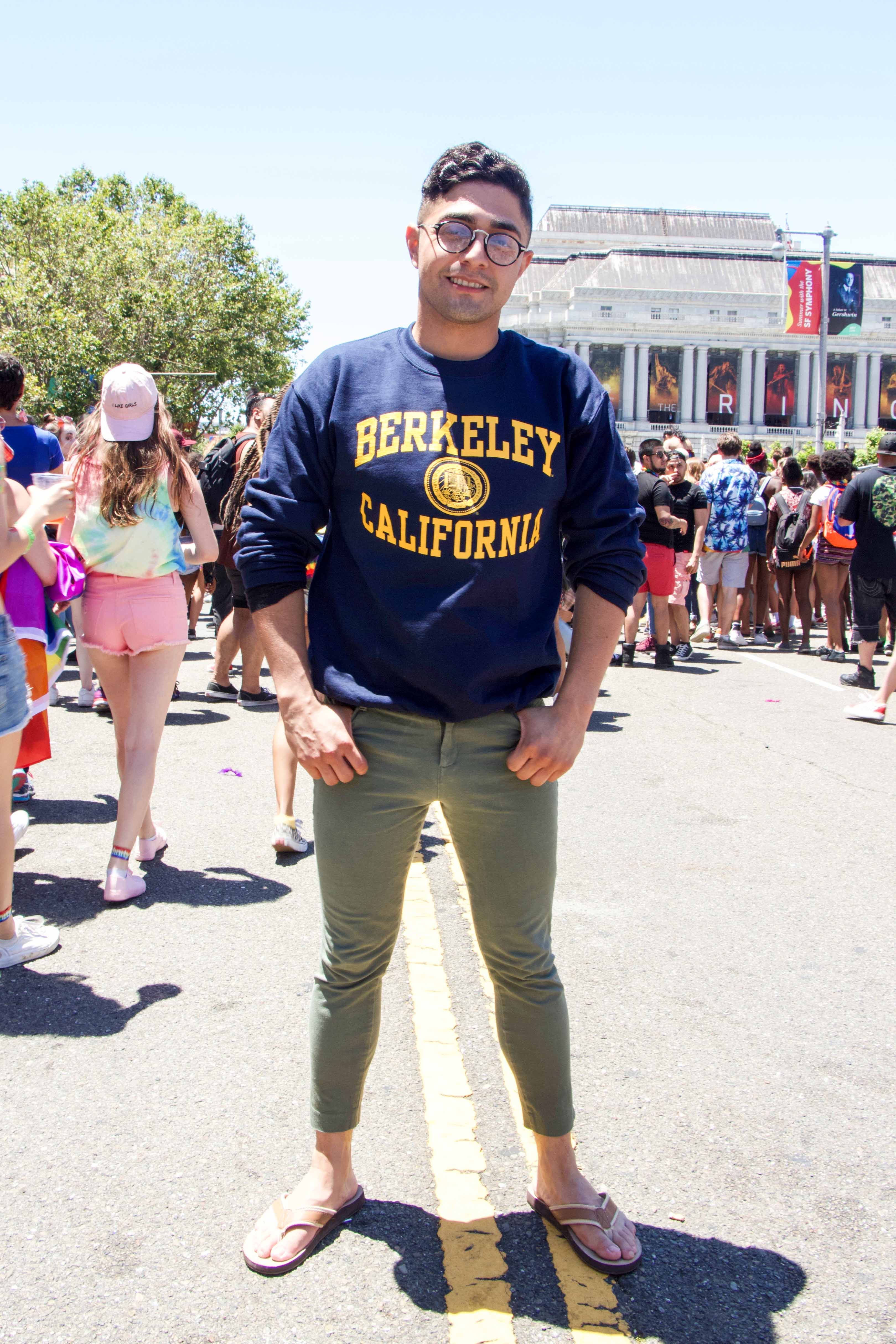
Giuliani Josimar Alvarenga | They/Them/Theirs | 29
“My chosen mother – who is also the mother of one of my close friends – was there for me when I came out. She housed me when I was homeless in high school, which was incredible because I was able to finish my last semester before going to UC Berkeley. I identify as gender fluid and with the local queer community that’s all about abolishing ICE [Immigration and Customs Enforcement], abolishing the militarization of Belize, and with those that understand that pride exists because trans women of color understood there was a problem: A militization that needed to be addressed and that’s why we’re here today.. These are all different institutions but all cut from the same cloth.
One of my safe community spaces and a group I also identify with is El/La Para TransLatinas, the Trans Latina organization in the Mission District. I’m originally from LA, but people in the Mission make me feel less homesick. I’m also poz and as a writer, I use my work to represent the poz community by sharing my lived experiences, the bureaucratic hoops we have to jump through just to try to protect ourselves, like using PrEP and receiving services. The poz community can range from the transgender community, POC spaces, but when you identify as poz it’s because you’re HIV-positive, and so there are different narratives and nuances for what that means for different people.”
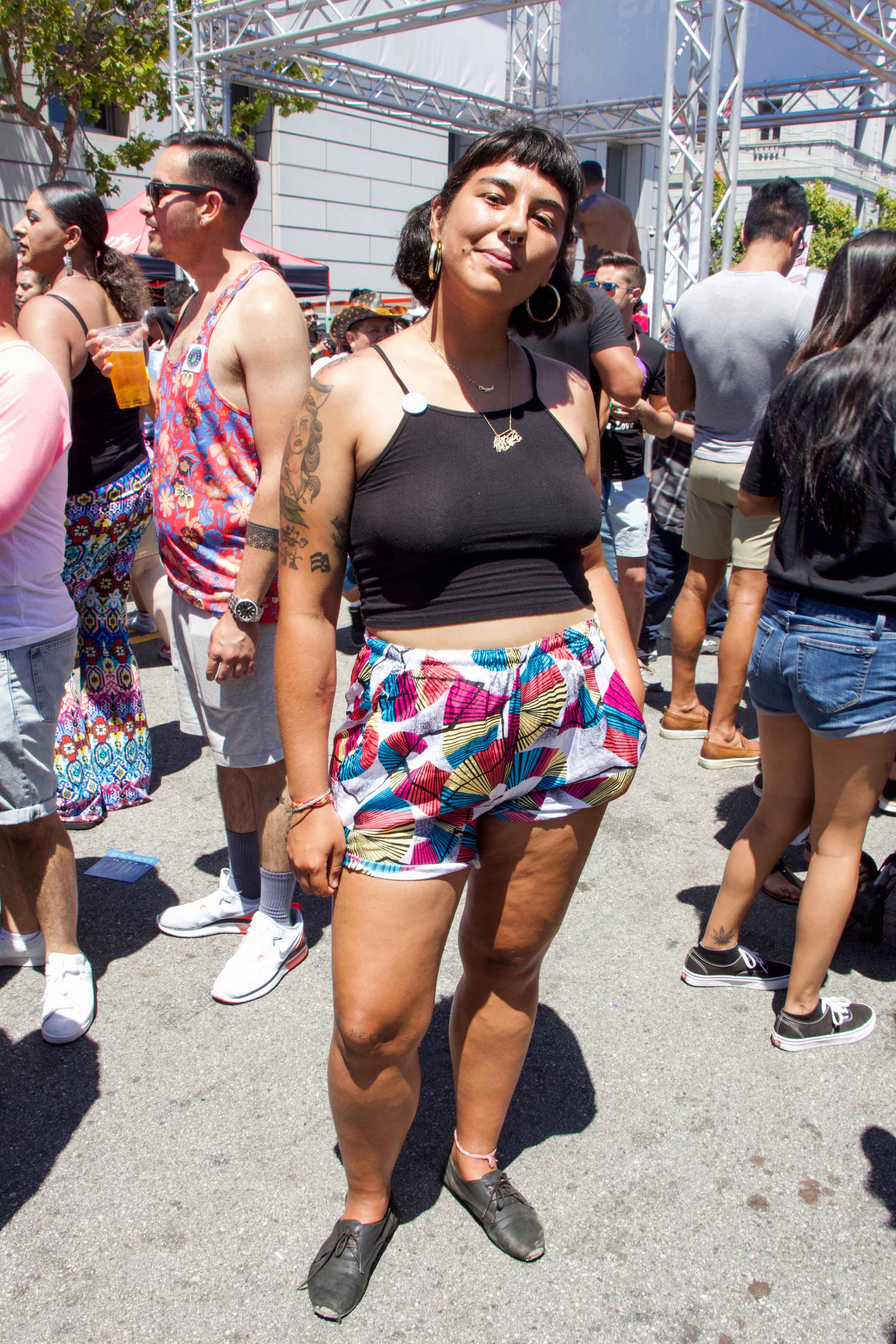
Nataly Cisneros | They/Them/She/Her | 28
“I identify as genderfluid, and my best friend Bianca was there for me when I came out. She always supported me. I’m really blessed to have a supportive community and a lot of friends that invite me to join them in safe queer spaces, and I mainly navigate QPOC spaces. In San Francisco, you’re always free and welcome to express yourself, but as far as for our Black, brown and trans queer community, instead of having a space, we always gotta pay hella money to get into a space, and I feel thats fucked up because hella hetero people always have spaces. Even the queer bars are cluttered with straight people who see these as ‘fun spaces,’ but don’t carry the weight or take the time to understand the weight that it takes to be a queer person. We take up space but we always gotta pay to take up space here.”
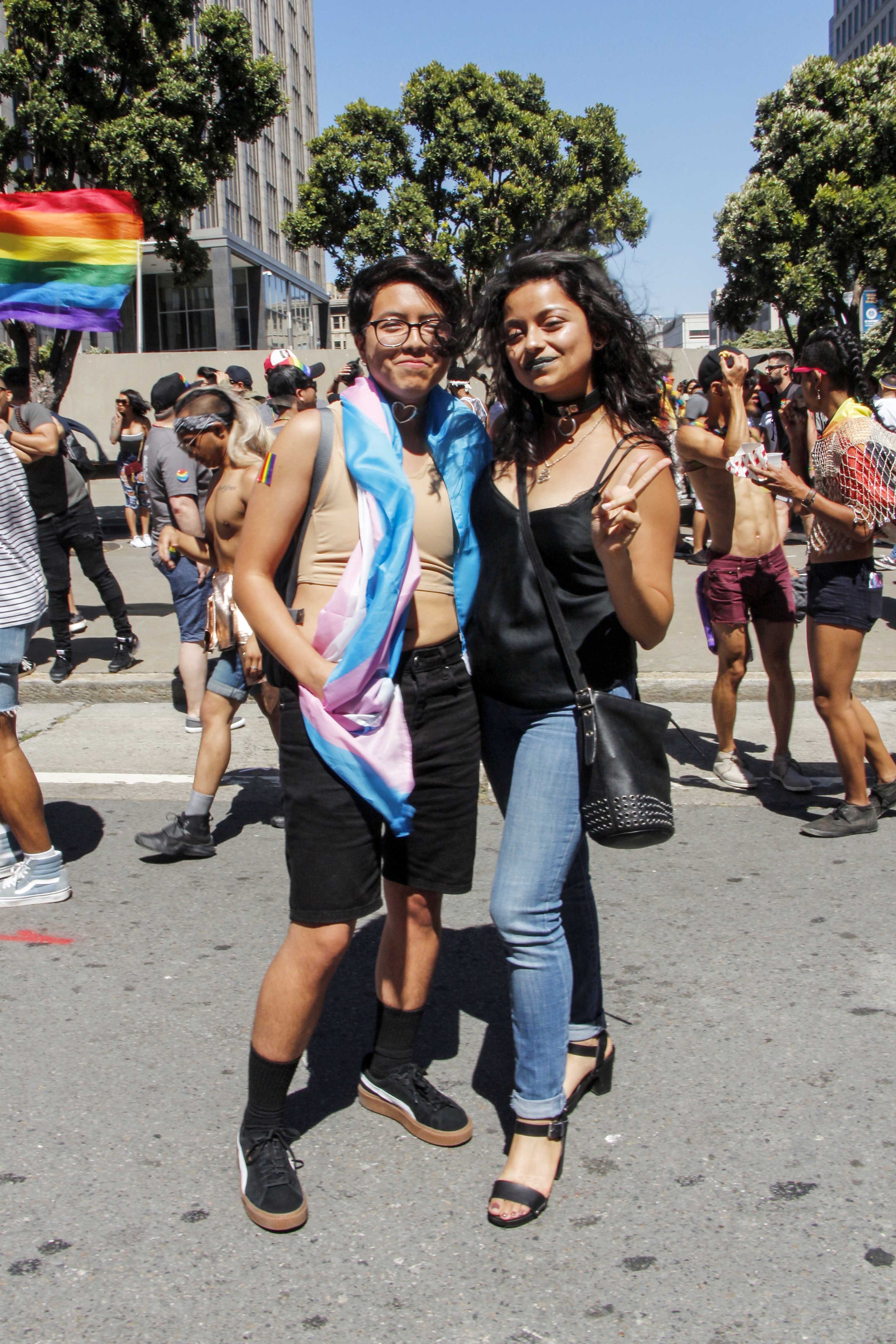
Andrew Guzman | He/Him | 22 and Vivian Guerrero | She/Her | 22
Vivian: “My boyfriend and older sister were there when I came out as pansexual.”
Andrew: “I identify as gender fluid and my girlfriend was there for me when I first came out. I don’t put myself out there too much. I go to the Queer Resource Center at [City College of San Francisco], and I like to go to the San Mateo Pride Center as well. The more I’m being ‘out and myself,’ San Francisco hasn’t proved to be as progressive as we’re told it is. At school someone called the cops on me when I was in the restroom for ‘looking like a man.’ I just walked into the restroom, no one asked me anything, and the protocol at my school is follow what the sign in the bathroom says: Call the cops if you see anything suspicious. So the fact that I was deemed ‘suspicious enough’ for them to call the cops on me showed me my school wasn’t really there for me. So I’m using whatever I can to make my existence clear: I exist, we’re here, and not just white people are queer!”







